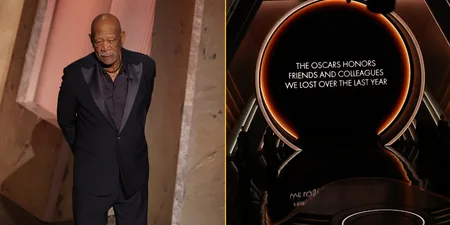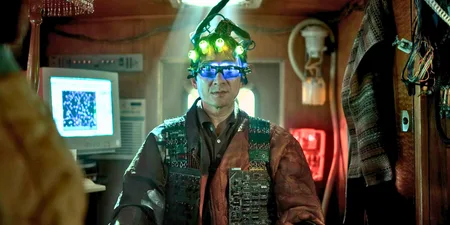We really don’t need to find out where Han Solo got his blaster from
Darth Vader has one of the great introductions in cinema history. Against a background of a white corridor, white smoke and white Stormtroopers, emerges a towering black figure. Is he a man? An alien? Or a robot? All we know is that is he is terrifying.
Unless, that is, you have watched the Star Wars prequels, in which case you know that it is annoying kid Jake Lloyd and wooden Hayden Christensen.
The long awaited Han Solo movie, Solo: A Star Wars Story, finally hit cinemas last weekend. It’s got decent reviews, but has been considered a financial disappointment after it took $30million less than the $130m analysts had predicted for its opening weekend.
Obviously, financial failure does not mean the film is artistically bankrupt, but it definitely feels like much less of an event than the releases of The Force Awaken, Rogue One and The Last Jedi did. No one really seems to be talking about it. Where are the memes or the hot takes? The word of mouth just isn’t there.
You can put this down to a few things: Avengers: Infinity War stealing its thunder, or Star Wars just becoming less special after four new movies in three years. But maybe the answer is simple: we just don’t need — or even want — a Han Solo origin story.
There’s an old saying that goes that horror films are always scarier when they leave the really grisly bits up to your imagination — what is in your head will always be more horrifying than any special effect. And this logic also applies to fictional characters.
In the original Star Wars movies, we are told that Darth Vader has a tragic backstory, but it is up to the audience to fill in the blanks. The prequels have many flaws, but as franchise movies, the biggest is that they just destroy all the mystique of the series’ most iconic character. If we saw the childhood frolics of Dracula, or The Joker, it would ruin them. So why show us Darth Vader’s?
Similarly, Han Solo is meant to be the ultra-cool space pirate, the smoothest motherfucker in the galaxy. He’s meant to have hundreds of adventures before we meet him. Those cool adventures exist, in our heads. And that’s what Solo should and could have been – just one of these really fun stand-alone adventures.
Instead what we get, at least for the first half of the movie, is a series or backstories for things that don’t need backstories. Did you care how Han got his blaster? No? Well, you’re going to find out. Plus how he met Chewbacca. And how he got the Millenium Falcon. And all of these things are so much less cool than how you imagined them.
In A New Hope, we are told that the Millennium Falcon “made the Kessel run in less than twelve parsecs!”. What the “Kessel run” actually is doesn’t matter — it is a device in the script to tell us that this ship is really badass. And it works.
In Solo, we actually get to see it. And, wow, it turns out it is a load of CGI and stuff. The magic is gone.
It is part of a trend of Hollywood franchise origin movies offering us laborious explanations of stuff we don’t need to know: X-Men Origins: Wolverine, Prometheus, 2009’s Star Trek, Hannibal Rising. Knowing where the alien in Alien comes from makes it less scary, not more. The power of imagination is one of a filmmaker’s most effective tools. Plus, it is a lot cheaper than CGI special effects.
To its credit, after Solo gets past its opening act it does stop doing these things and becomes a pretty enjoyable space romp. But it’s time Hollywood stopped with the needless origin stories that ruin the mystique of beloved characters and realised that the backstories we build in our heads will almost always be far more powerful than any cash-grab movie can be.







































